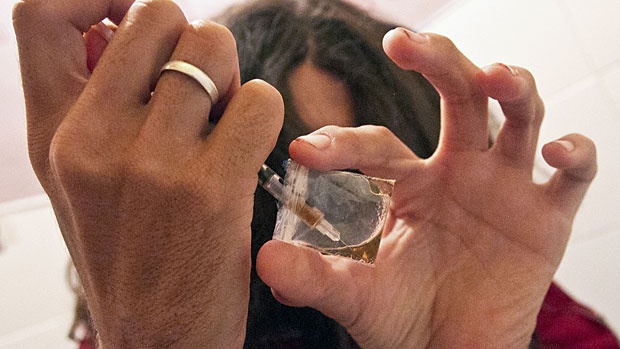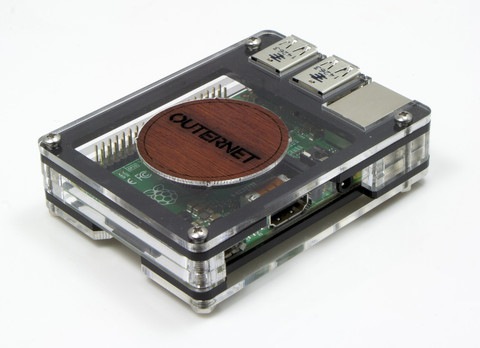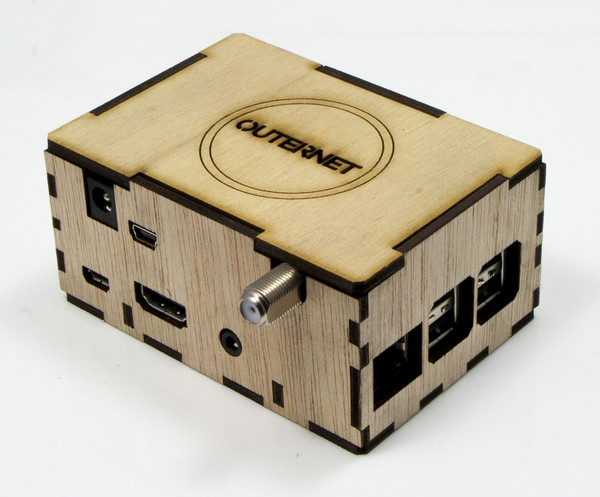Topic: COMMUNITY INTEREST

― Dan Rather-1955
Yes, Dan Rather did heroin, ONCE, for a story. It was a special kind of Hell. He was lucky, he survived.

| « | June 2015 | » | ||||
| S | M | T | W | T | F | S |
| 1 | 2 | 3 | 4 | 5 | 6 | |
| 7 | 8 | 9 | 10 | 11 | 12 | 13 |
| 14 | 15 | 16 | 17 | 18 | 19 | 20 |
| 21 | 22 | 23 | 24 | 25 | 26 | 27 |
| 28 | 29 | 30 | ||||

― Dan Rather-1955
Yes, Dan Rather did heroin, ONCE, for a story. It was a special kind of Hell. He was lucky, he survived.




McCarter Theatre Artistic Director Emily Mann said, "We salute the vision and the investment the Burke Foundation has made in the community and in McCarter. The support of the arts offered by this grant means that over the three year period thousands of young people in the area will be able to have meaningful participation in the performing arts."
The grant period's first year will include an increase in support for initiatives offering arts access and participation to thousands of underserved students across the state. Responding to an ever-growing need for arts organizations to fulfill essential core curriculum standards, funding will be allocated to strengthen McCarter's existing in-school programs across the region including those at Trenton Central High School, New Brunswick Regional Schools, Middlesex County Vocational Technical High School, Princeton Public Schools, and Trenton's Grace Dunn Middle School, among others.
The funding will also allow McCarter to substantially increase the number of fully-subsidized tickets to student matinees and provide bus funding to schools for whom transportation cost is the primary barrier to arts access. While McCarter has long been committed to offering financial aid for after school theatre classes and summer theatre camps, the Burke Foundation gift will also significantly increase the pool of available scholarship funds for qualifying families.
In addition, this grant will enable McCarter to create new programming in partnership with community organizations including Eden Autism Services, Homefront, and Princeton Community Housing. By the end of the first year alone, thousands of additional residents and families could potentially be positively impacted by this expansion.
McCarter Theatre Center, the largest arts organization in the greater Princeton area, launched a major reorganization of its education and engagement programming efforts in the fall of 2013, with a strong focus on community impact and access. Through after-school classes, in-school residencies (now reaching a dozen local schools from Trenton to New Brunswick), adult education classes, community partnerships and more, McCarter is dedicated to bringing the benefits of high-quality arts education to the region. This significant grant by the Burke Foundation continues significant growth for McCarter's mission with regards to education and engagement in the community.
According to Erica Nagel, Director of Education and Engagement for McCarter Theatre Center, "Theatre education increases creativity, collaboration, and artistry among participants, and we are thrilled that so many more young people from diverse economic backgrounds will have the chance to experience the kind of learning and growth our programs are designed to provide. Through transportation funding, ticket subsidies, expanded in-school programs, new community partnerships, and increased scholarship money, the generosity and vision of the Burke Foundation has made it possible to address the areas identified as the most significant barriers to youth arts participation and access in our community."

By Tammy Duffy
Ethical Responsibilities In Public Health
Let's Get Loud!
By Tammy Duffy

The mortality and morbidity caused by the misuse of alcohol, tobacco, and illicit drugs represents a significant burden to public health. A key part of the public health response to drug problems in developed societies is the collection of epidemiological and social science data to define populations that are at risk, the identification of opportunities for intervention and the evaluation of the effectiveness of different policies in preventing or treating drug misuse and drug-related harm. The systematic use of epidemiological and social science research methods to study illicit drug use is barely 40 years old in the United States of America and the United Kingdom of Great Britain and Northern Ireland, which have pioneered the approach.
Public health programs today constitute a multi-professional inter-organizational environment, where both health service and other organizations are involved. Developing information systems, including the IT security measures needed to suit this complex context, is a challenge. To ensure that all involved organizations work together towards a common goal, i.e., promotion of health, an intuitive strategy would be to share information freely in these programs. However, in practice it is seldom possible to realize this ideal scenario. One reason may be that ethical issues are often ignored in the system development process. Concerns involving confidentiality caused by geographically referenced health information and influences of professional and organizational codes are a concern and should be a focus for towns. The experience demonstrated in towns shows a blatant disregard of ethical issues. This can result in a prolonged development process for public health information systems.
Recently, L.A. Parker, a journalist for the Trentonian, wrote an article that focused on deadly heroin distribution in Trenton and Hamilton. (link to article is below)
http://www.trentonian.com/opinion/20150612/la-parker-hamilton-twp-police-launch-search-for-killer-heroin-or-fentanyl
In Mr. Parker's article, I will bring to your attention the following quote. " Hamilton police chose not to release information about these heroin issues, believing that a public announcement may increase desires for the three stamped brands, thereby placing more users at risk."
I will share an analogy with you. Let's think about the times when grocery stores send out customer notifications on a possible listeria outbreak due to lettuce that was sold between a specific date time. The stores expectation is that your do not use the product and even come to the store for a refund in some cases. Does the leadership in Hamilton want to block these public messages as well? Do they think residents are so dumb that they will run out and purchase listeria riddled lettuce and endanger their health and lives on purpose? For the leadership to chose not to release information on the heroin issues is no different than this lettuce analogy.
The gig is up. The dealers and the hard core heroin users already know about the "new version" of drug Mr. Parker references in his article. This was reported over a year ago to be in existence right around the corner in Philadelphia and Camden. A drug addict will take the risk and not think they could die from it. The addicts do not care. What the township leadership is ignoring is the possibility of saving the life of the person who is on the fence about taking heroin for the first time. Education is critical in any epidemic. Hamilton is the alcoholic who refuses to admit they are alcoholics. They have a drug problem and they want to keep is silent.
In the past, people never wanted to talk about cancer. If a family member had cancer they actually would whisper the word cancer when they spoke about it. During this timeframe the statistics and successes for cures and positive outcomes in cancer treatment was abysmal. Then people decided to get vocal about it. Lobbyist marched on capital hill, research dollars were set aside to make a positive effect. The removal of the silence and whispers saved lives. It has positively changed outcomes and in some cases permanently eradicated many cancers. Let's get loud!
If you received a phone call that your child/loved one was in the emergency room for a drug overdose would a hospital not be obligated (if you were their guardian and health care advocate) to share with you what drug they took, what their issue was and how you can get help for your loved one to ensure this overdose did not happen again? Of course, so why is the twp held to a lesser standard?
The principle of non-maleficence simply means to “do no harm”. The Public Safety Officer in a town has the direct responsibility to ensure the public is not harmed on purpose. Non-maleficence requires that one should refrain from causing harm or injury or from placing others at risk of harm or injury. In biomedical research, the principle requires researchers to minimize the risks of participation in research. Telling the truth is also relevant to the principle of non-maleficence. Failing to give full information about the risks of participation in research violates the principles of respecting autonomy (by not telling the truth) as well as that of non-maleficence. By keeping silent on the heroin issues, the leadership is putting the residents in grave danger.
Does the Township of Hamilton have a legal and ethical obligation to share the information with the community as it pertains the release of information about these heroin issues? Is their comment that they believe that a public announcement may increase desires for the three stamped brands, thereby placing more users at risk an acceptable response?
We have reached out to the NJ State Addiction Services, Div. of Human Services to gather further information on this topic. We will share with you what the legal and ethical obligations are of towns to the communities they serve once we hear back from them.


The numbers
Drug overdose deaths in the United States have risen steadily since 1970. Painkillers actually kill more Americans than heroin and cocaine combined, according to the Centers for Disease Control, but heroin is still one of the No. 1 killers of illegal drug users. Only one in 10 heroin overdoses ends in death.
Overdose deaths from heroin have increased recently,and heroin use is also on the rise. In 2011, 4.2 million Americans over the age of 11 had tried heroin at least once, according to the National Institute on Drug Abuse.
An estimaged 23% of them will become addicts. And it's addicts who die more frequently than new users, studies show.
How heroin works
Heroin is most often mixed with water and injected. Injecting it minimizes the lag time between when the drug is taken and effects are felt -- with injection, the effects are almost immediate.
It can also be smoked, snorted or eaten, but smoking or eating destroys some of the drug and mutes its effects.
When someone takes heroin there is an immediate rush. Then the body feels an extreme form of relaxation and a decreased sense of pain.
What's happening inside the body is the heroin is turning into morphine. Morphine has a chemical structure similiar to endorphins -- the chemicals your brain makes when you feel stressed out or are in pain. Endorphins inhibit your neurons from firing, so they halt pain and create a good feeling.
Morphine, acting like your endorphins, binds to molecules in your brain called opioid receptors. When those receptors are blocked, that creates a high.
Why you die
Most people die from heroin overdoses when their bodies forget to breathe.
Heroin makes someone calm and a little bit sleepy, but if you take too much then you can fall asleep, and when you are asleep your respiratory drive shuts down.
Usually when you are sleeping, your body naturally remembers to breathe. In the case of a heroin overdose, you fall asleep and essentially your body forgets."
A heroin overdose can also cause your blood pressure to dip significantly and cause your heart to fail.
Studies show intravenous heroin users are 300 times more likely to die from infectious endocarditis, an infection of the surface of the heart.
Heroin use can also cause an arrhythmia -- a problem with the rate or rhythm of the heartbeat. During an arrhythmia, the heart may not be able to pump enough blood to the body, and lack of blood flow affects your brain, heart and other organs.
Heroin use can also cause pulmonary edema. That's when the heart can't pump blood to the body well. The blood can back up into your veins, taking that blood through your lungs and to the left side of the heart.
As pressure in the blood vessels increases and fluid goes into the alveoli, the air spaces in the lungs, this reduces the normal flow of oxygen through your lungs, making it hard to breathe. This too can give you a heart attack or lead to kidney failure.
Heroin can also come with other toxic contaminants that can harm a user -- although deaths from such instances, while not unheard of, are thought to be rare.
Studies suggest instantaneous death is unusual. One study showed such deaths, where a needle and syringe are still in place, account for only 14% of heroin-related deaths.
Heroin deaths increase when...
There are some common social characteristics in heroin deaths. Most fatalities involve men, particularly those who have struggled with other drugs or alcohol and other drugs or alcohol are often present.
While many are single, most users die in their homes and/or in the company of another person.
An addict does have a much higher chance of dying if he or she leaves treatment. The risk of death is higher for newly clean heroin addicts. A number of fatalities appear to happen after periods of reduced use.
In fact, long-term users who die from overdoses are likely to have heroin levels no higher than those who survive.
That may be in part because those who are newly clean don't know how much of the drug to give themselves any more. They won't need the same amount to get high as when they were using more regularly.
There are also some studies that show tolerance to the respiratory depressive effects of opiates increases at a slower rate than tolerance to the euphoric and analgesic effects. As your tolerance to the drug develops, you typically need more of it to produce the high you are used to getting. This may be why long-term users are potentially at greater risk of overdose than novices.
Statistics suggest that newer heroin users aren't the ones most likely to die. One study showed only 17% of the deaths studied were in new heroin users.
However, newer users can overdose because they don't know how much drug to take, compared to experienced users. I think it is misleading to say you would not die if you only use it once or twice. To not educate your community is just wrong. For a police department and town leadership to think that you will start a buying binge on Heroin if you make the community aware, is in a word, RECKLESS.



By Tammy Duffy

The International Boxing Hall of Fame, in Canastota, NY honored their new class of inductees this weekend. The living inductees include, heavyweight champion Riddick "Big Daddy" Bowe, featherweight champion "Prince" Naseem Hamed and lightweight champion Ray "Boom Boom" Mancini in the Modern category, light flyweight champion Yoko Gushiken in the old-timer category, booking agent/manager Rafael Mendoza and referee Steve Smoger in the Non-participant category, and editor journalist Nigel Collins and broadcaster Jim Lampley in the Observer category.
Upon receiving the news that they would be inducted, Ray Mancini said," Wow, I'm humbled and I'm honored. To be in the International Boxing Hall of Fame with so many of my friends and heroes is overwhelming." Jim Lampley said," I am surprised and delighted to learn of my election to the IBHOF."
The Hall of Fame also released names of posthumous honorees: Massao Ohba and Ken Overlin in the Old-timer category, and publicist John F. X. Condon in the Non Participant category. Inductees were voted in by members of the Boxing Writers Association and a panel of international boxing historians.
The events of the 4 day weekend included: a cocktail reception, banquet, golf tournament, all-boxing collectors show, 5K race, ringside lecture, parade and the official boxing greats of yesterday and today on site for boxing enthusiasts.
The Hall of Fame Museum offers unique and exciting exhibits of memorabilia including fist castings, robes, boxing shoes, championship belts, statues, the Hall of Fame wall and audio/visual stations highlighting classic boxing matches. The world famous Madison Square Garden boxing ring, where Muhammad Ali and Joe Frazer fought in the "fight of the century" on March 5, 1971, is on permanent display in the museum.
Michael Spinx was swarmed by fans outside of the Days Inn. The men in the crowd were having Michael sign at times 10 to 15 photographs at a time. In a swarm of 75 men this little blonde female reporter (who was way in the back of the pack) shouted out elegantly," I am the only woman here so I should be allowed to the front of the pack." Michael looked up, his security guard looked up, the men in the crowd turned around. Then the most interesting thing happened. The crowd parted as if Moses had just parted the sea once again. Michael Spinx and some of the men in the crowd said," Bring the lady to the front." So to the front she went beaming. I will remember this day forever and the glove Michael Spinx signed for me. For it was I who bellowed from the back of the pack of 75 men to get her gloved signed by the champion, Michael Spinx.


There are inflection points that change the course of humanity. Access to the internet is an example of one such event. A new device, called the LANTERN, manufactured by a NY- based company, Outernet, has the potential to change the world. Their device has the ability to continuously receive radio waves broadcasted by outernets in space and turn them into digital files. When you want to get onto the internet, one would just turn on your device and enable your wifi enabled device. It is that easy. It works like an offline version of the internet that updates constantly.
Outernet takes the best of the web and broadcasts it from space for every human on Earth. The content that they broadcast is determined by anyone who chooses to vote on the most important things to share with humanity. Outernet repurposes broadcast satellite TV equipment and we offer instructions on how to build a DIY-receiver. Once a receiver is configured, Outernet’s content can be accessed by any WiFi-enabled device.

This new device, the Lantern, will allow us to response faster and more efficiently during the next natural or man made disaster. When cell towers go down and cell towers are compromised, you will not longer be compromised. You will be able to get your news anywhere in the world, even the countries with strong censorship rules. You will never have a huge cell phone bill again during your oversea travels, use your Lantern.
The world will be able to create their own digital library. Parents can control what their kids see. The Outernet will have courses available to build literacy in parts of the world where literacy is compromised. This makes education and learning truly universal.
Outernet is working with IREX in Namibia and the World Bank in Sudan to turn on Lanterns in those countries. This is just the beginning. Lantern is broadcasting from space, so if you have a government that says you can’t watch this or see that, Lantern lights the path to override this censorship. Everything a user consumes is anonymous.
Everyone on Earth can use the Lantern. You will be able to use the Lantern to download news, weather, books, videos and audio for FREE. You will have access to information, freedom from censorship and consume Internet content anonymously. You will even be able to charge your phone with Lantern.
There are projects with similar goals, like Project Loon from Google and Internet.org from Facebook. These are very different from Outernet’s Lantern. Both of these alternatives will only provide two-way Internet to everyone. That is a commendable goal, but it will also be a fee-based service. Facebook’s (internet.org) is a partnership between social networking service company FACEBOOK and six mobile phone companies: Samsung, Ericsson, MediaTek, Nokia, Opera Software, and Qualcomm) that aims to bring affordable Internet access to everybody by increasing affordability, increasing efficiency, and facilitating the development of new business models around the provision of Internet access.
Google’s Project Loon is a research and development project. Its mission is to provide Internet access to rural and remote areas. The project uses high-altitude balloons placed in the stratosphere at an altitude of about 32 km to create an aerial wireless network with up to3G-like speeds. The balloons are maneuvered by adjusting their altitude to float to a wind layer after identifying the wind layer with the desired speed and direction using wind data from the National Oceanic and Atmospheric Administration. Users of the service connect to the balloon network using a special Internet antenna attached to their building. The signal travels through the balloon network from balloon to balloon, then to a ground-based station connected to an Internet service provider, then onto the global Internet. This balloon project I suspect will deflate quickly, although a cool concept.
Outernet's signal is free to receive. There are no balloons or slick corporate maneuvers involved. There are also sovereign air space issues with Internet devices, like balloons and drones, inside the atmosphere. Breaking censorship will be difficult in places where a free Internet is unwanted this these approaches. You also encounter enormous spectrum regulation when the user device goes from being a receiver to a transmitter (it talks back). So you can see they are not competing services, as we are solving a problem for a different segment of the market.
Outernet is directly hooking into the satellite operator’s infrastructure. Their uplink bandwidth is really not measured. Their download speeds, however, range from 100 kbps to 25 Mbps. Technically, they are able to burst to download speeds of 80 Mbps, but they prefer to make content available to small-sized antenna, so we will likely limit download speeds to 25 Mbps. A 25 Mbps downlink can deliver 10 GB of data over the course of an hour.
Is this a new era, no censorship? Outernet works so that if one frequency is jammed, they simply move to an alternative--and can do this across 5 difference channels (or more). Since Outernet is a broadcast solution, the monitoring stations are actually irrelevant, since the reception of broadcast content ensures the anonymity of consumption. Since they use existing spectrum licenses, their anti-censorship plan is all perfectly legal and abides by all restrictions of local jurisdictions. But since they are broadcasting data in a multi-channel, multi-speed, and super duplicated manner, it just makes it hard to selectively censor specific works that we distribute. Of course, a government is always able to continuously jam all of our frequencies (this is a little more difficult for certain bands), but which government wants to be the one that is publicly known for disrupting humanity's public library?
Outernet currently resides on two satellites, Galaxy 19 and the Hotbird in space. This covers NE, Europe, the Middle East and North Africa. Outernet plans on broadcasting from 5 additional satellites in the near future. They will be able to broadcast to the entire world, for free once this implementation takes effect.
Outernet takes the best of the web and broadcasts it from space for every human on Earth. The content they broadcast is determined by anyone who chooses to vote on the most important things to share with humanity. Outernet repurposes broadcast satellite tv equipment and they offer instructions on how to build a DIY-receiver. Once a receiver is configured, Outernet’s content can be accessed by any WiFi-enabled device.

Yesterday brought another death in the City of Trenton from a Heroin overdose. A rapid deployment of Narcan could not save a young man's life. The past six weeks has brought 6 additional deployments of Narcan in Hamilton, Mercer County. A Hamilton parent moved their child to North Carolina in efforts to save their life and remove them from the Big H. This valiant move by this parent was in vain, their child died in North Carolina. A youth also died in Bordentown at the tender age of 23 from a heroin overdose. These stories keep compounding. The leadership in the town of Hamilton has been radio silent on this issue. Why is that? The leadership should be watching the trends and developing plans that are proactive for our residents and youth. However, they react in silence in Hamilton, where the highest deployment of Narcan has been recorded.
Parents and their children need to be educated on what is happening as it pertains to heroin. Here is your weekly education on this deadly epidemic.
A cheap highly addictive drug known as "cheese heroin" has killed 21 teenagers in the Dallas area over two years, and authorities say they are hoping they can stop the fad before it spreads across the nation.
"Cheese heroin" is a blend of so-called black tar Mexican heroin and crushed over-the-counter medications that contain the antihistamine diphenhydramine, found in products such as Tylenol PM, police say. The sedative effects of the heroin and the nighttime sleep aids make for a deadly brew.
"A double whammy -- you're getting two downers at once," says Dallas police detective Monty Moncibais. "If you take the body and you start slowing everything down, everything inside your body, eventually you're going to slow down the heart until it stops and, when it stops, you're dead." (Audio slide show: A father describes his teen son's death)
Steve Robertson, a special agent with the Drug Enforcement Administration in Washington, says authorities are closely monitoring the use of "cheese" in Dallas.
Trying to keep the drug from spreading to other cities, the DEA is working with Dallas officials to raise public awareness about the problem. Authorities also are trying to identify the traffickers, Robertson says.
"We are concerned about any drug trend that is new because we want to stop it," he says.
Why should a parent outside Dallas care about what's happening there?
Robertson says it's simple: The rise of the information technology age makes it easy for a drug trend to spread rapidly across the country.
"A parent in New York should be very concerned about a drug trend in Dallas, a drug trend in Kansas City, a drug trend anywhere throughout the United States," he says.
Middle schoolers acknowledge 'cheese'.
"Cheese" is not only dangerous. It's cheap. About $2 for a single hit and as little as $10 per gram. The drug can be snorted with a straw or through a ballpoint pen, authorities say. It causes drowsiness and lethargy, as well as euphoria, excessive thirst and disorientation. That is, if the user survives. (Interactive: What is "cheese"? )
Authorities aren't exactly sure how the drug got its name "cheese." It's most likely because the ground-up, tan substance looks like Parmesan cheese. The other theory is shorthand for the Spanish word "," which is street slang for heroin.
By using the name "cheese," drug dealers are marketing the low-grade heroin to a younger crowd -- many of them middle schoolers -- unaware of its potential dangers, authorities say.
"These are street dealers, dope dealers," Moncibais recently warned students at Sam Tasby Middle School. "They give you a lethal dose. What do they care?" Moncibais then asked how many students knew a "cheese" user. Just about everyone in the auditorium raised a hand. At one point, when he mentioned that the United States has the highest rate of drug users in the world, the middle schoolers cheered. (Watch middle schoolers raise hands, admit they know drug users )
"You know, I know being No. 1 is important, but being the No. 1 dopeheads in the world, I don't know whether [that] bears applause," Moncibais shot back.
Authorities say the number of arrests involving possession of "cheese" in the Dallas area this school year was 146, up from about 90 the year before. School is out for the summer, and authorities fear that the students, with more time on their hands, could turn to the drug.
'Cheese' as common a problem as pot School officials and police have been holding assemblies, professional lectures, PTA meetings and classroom discussions to get the word out about the drug. A public service announcement made by Dallas students is airing on local TV, and a hotline number has been created for those seeking assistance.
Drug treatment centers in Dallas say teen "cheese" addicts are now as common as those seeking help for a marijuana addiction. "It is the first drug to have even come close in my experience here," says Michelle Hemm, director of Phoenix House in Dallas.
From September 2005 to September 2006, Phoenix House received 69 "cheese" referral calls from parents. Hemm says that in the last eight months alone, that number has nearly doubled to 136. The message from the parents is always, "My kid is using 'cheese,' " she says.
Phoenix House refers them to detoxification units first, but Hemm says at least 62 teens have received additional treatment at her facility since last September. Fernando Cortez Sr. knows all too well how devastating cheese heroin can be. A reformed drug user who has spent time in prison, Cortez had spoken to his children about the pitfalls of drug use. He thought his 15-year-old son was on the right track.
But on March 31, his boy, Fernando "Nando" Cortez Jr., was found dead after using cheese heroin. "I should have had a better talk with him," he says. "All it takes is once. You get high once and you die, and that's what happened to my son."
He knows it's too late for his son. Now, he is using his son's story to help others.
"All I can do is try to help people now. Help the kids, help the parents."
CNN.com senior producer Wayne Drash contributed to this report.